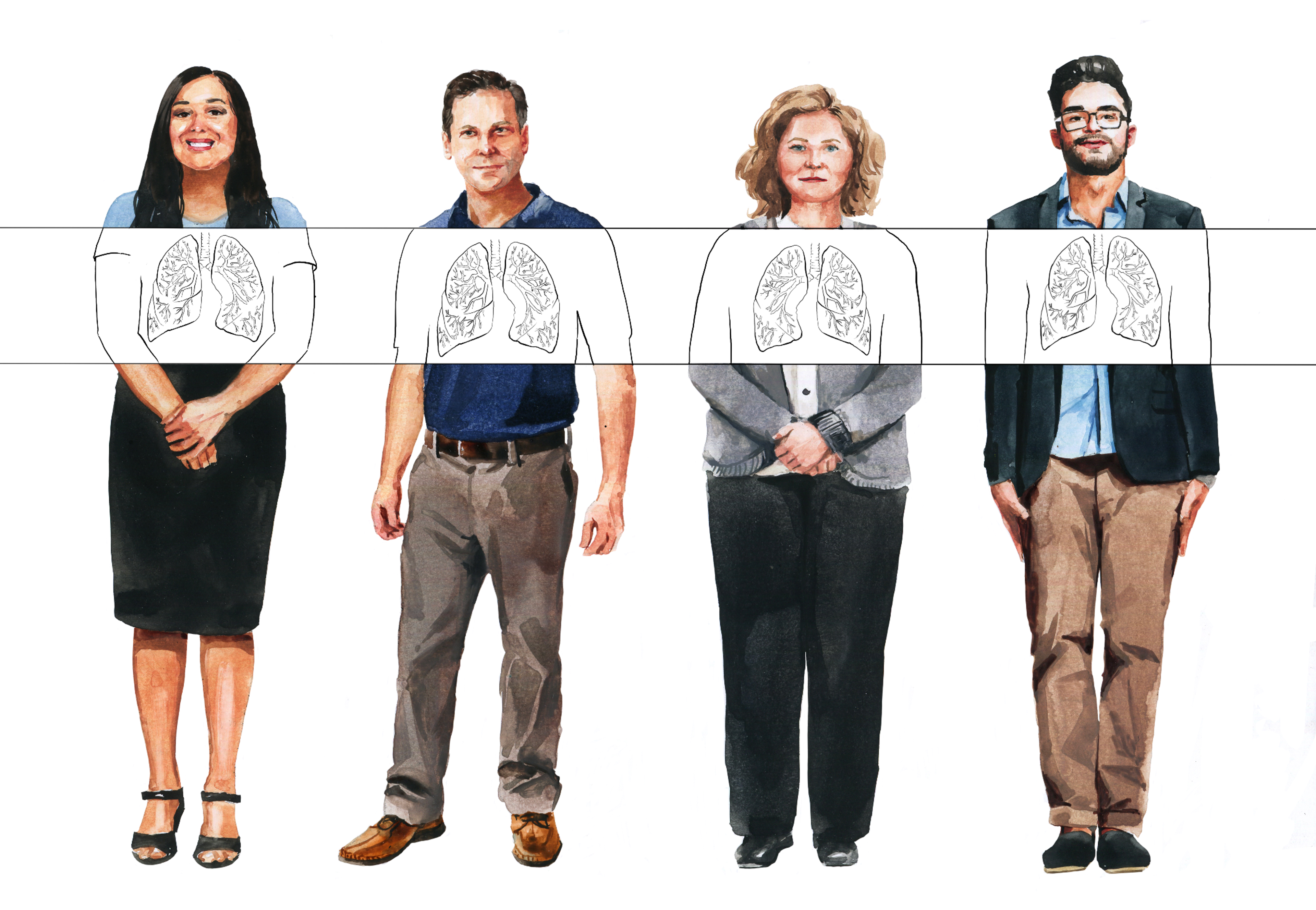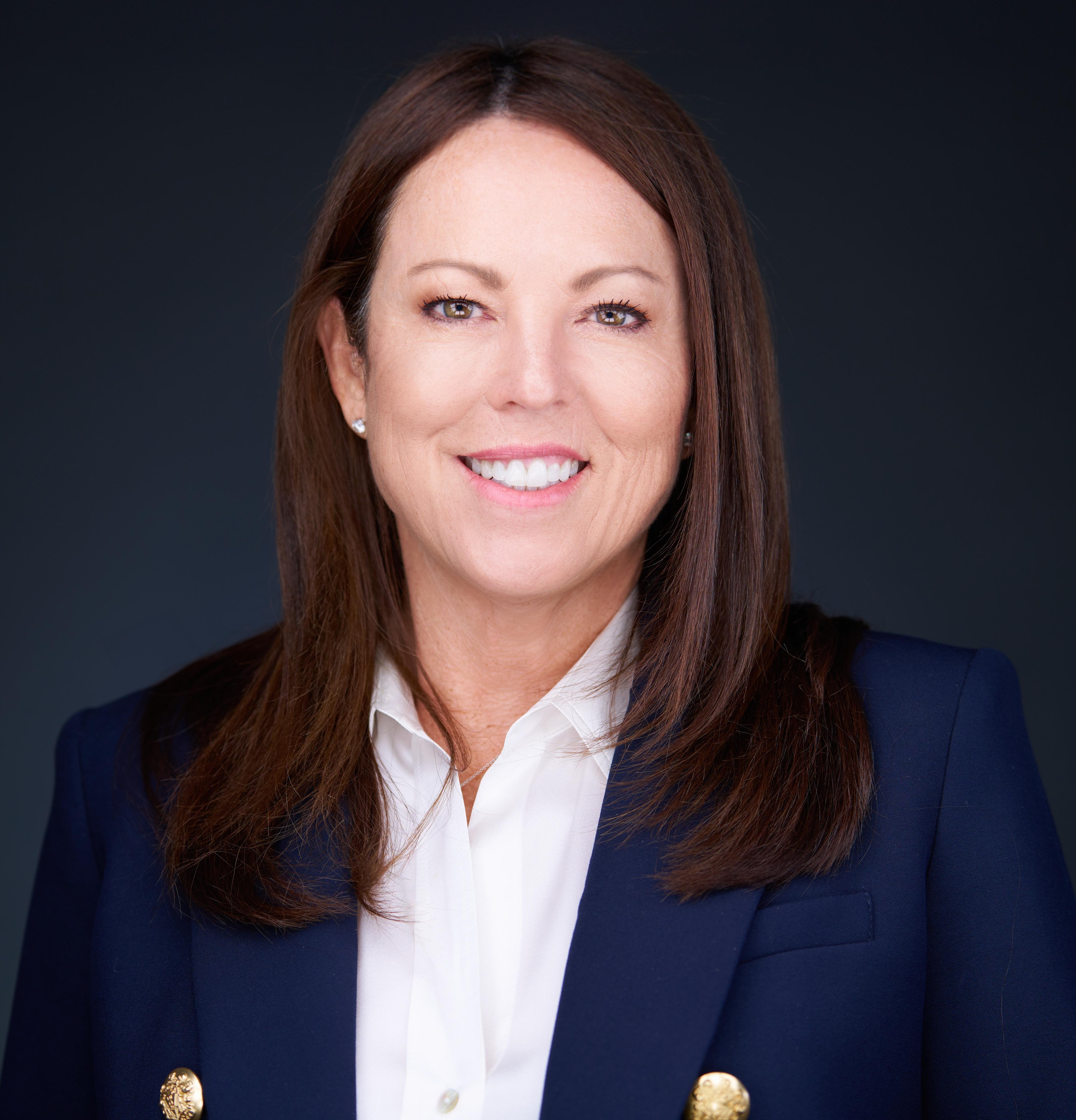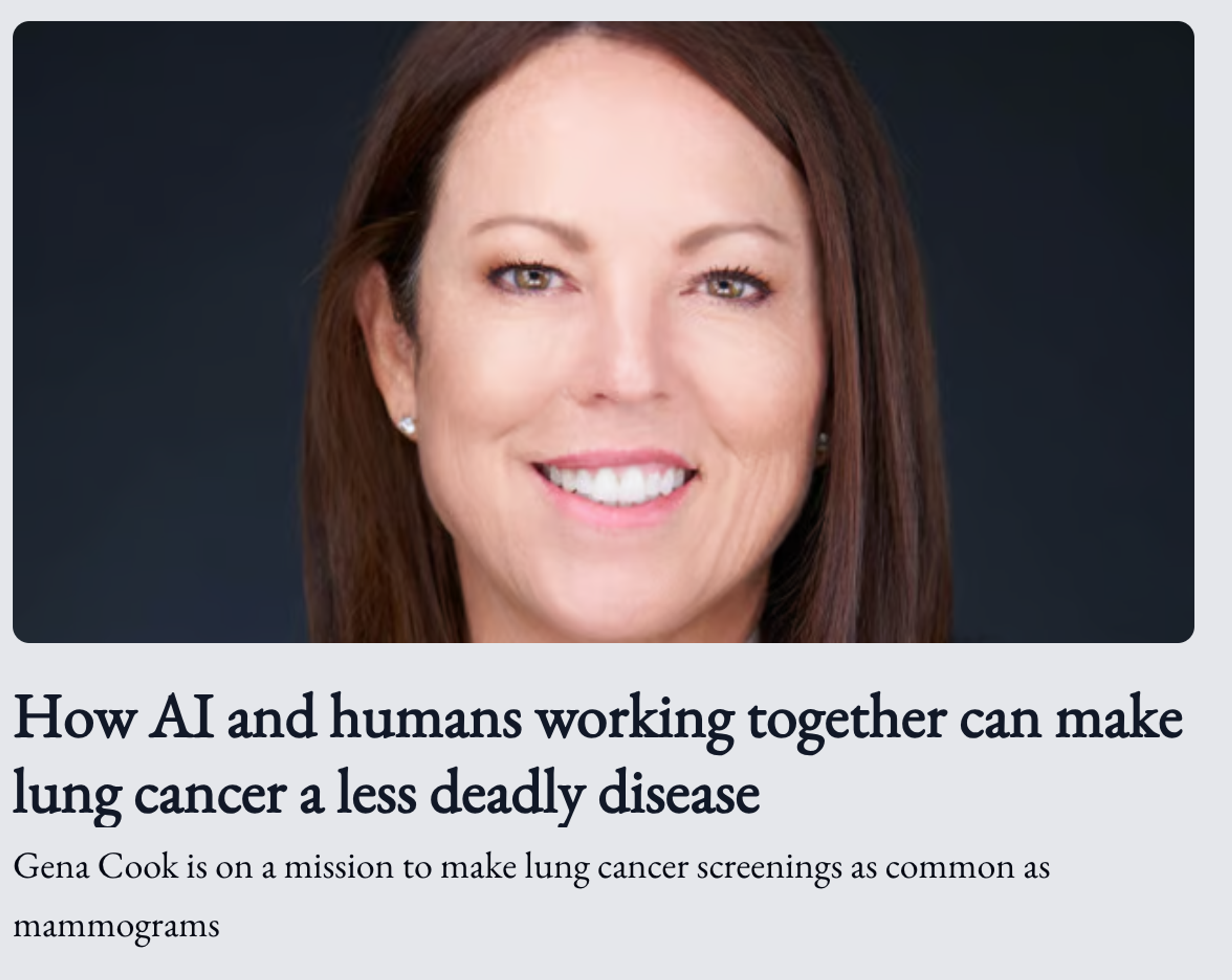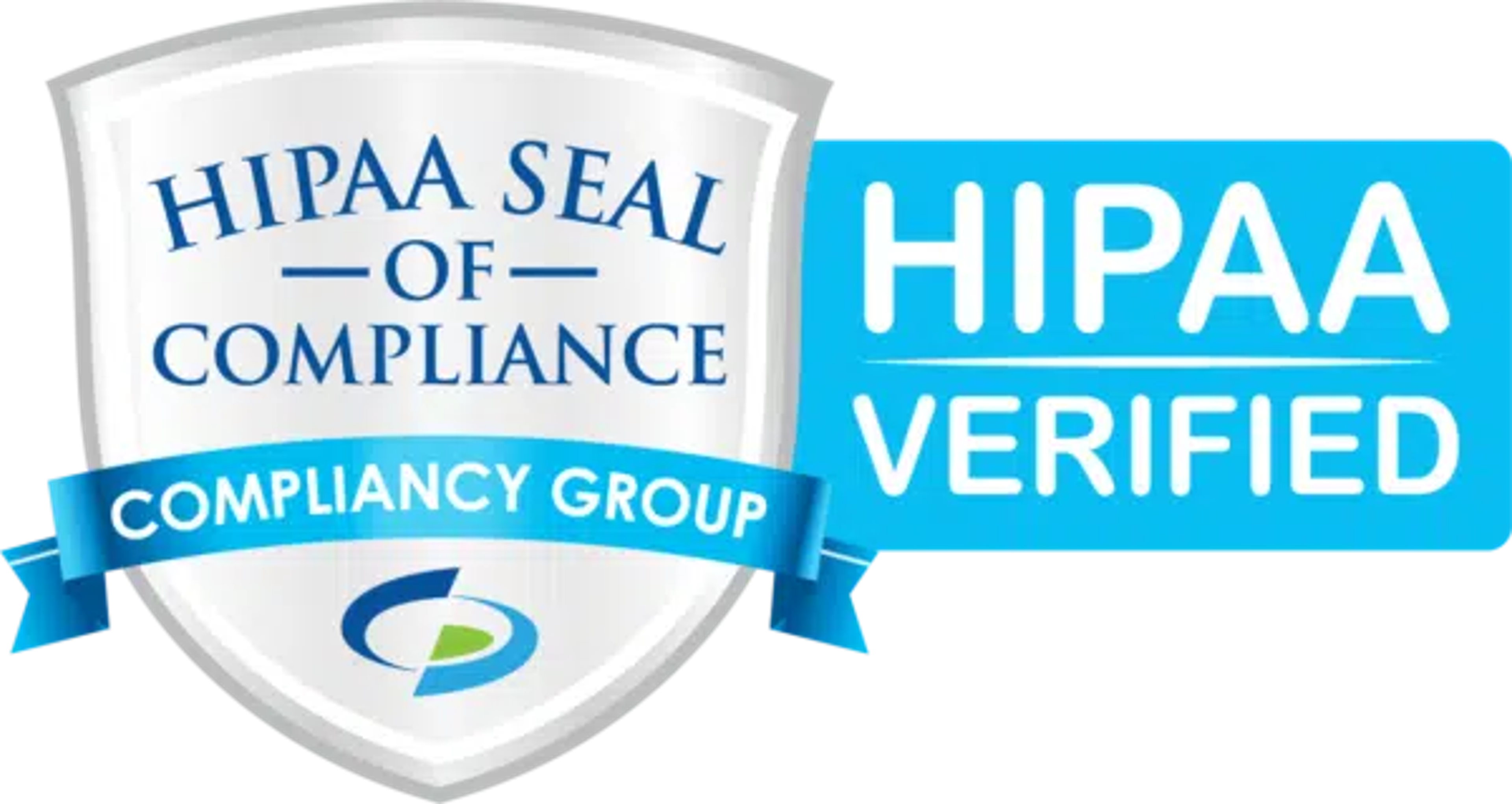
Lung Cancer is a Silent Killer
By: Gena Cook • August 15, 2024
Lung cancer is a silent killer—but it doesn't have to be. It’s especially important for women, who face a 1 in 17 lifetime risk of developing lung cancer, regardless of smoking status. More people die from lung cancer each year than colon, breast, and prostate cancers combined. And more women die from lung cancer than from breast cancer. It's time to act.
These statistics hit home when I learned the heartbreaking news that Susan Wojcicki, beloved and only 56—my age—lost her life to lung cancer.
With a quick, affordable low dose chest CT scan that takes just minutes annually, we can transform the fight against lung cancer—saving tens of millions of lives and slashing healthcare costs by hundreds of thousands of dollars per life saved. Despite lung cancer being the deadliest cancer, not enough eligible patients are screened each year.
Breast cancer screening has created a successful model for us to follow – leveraging effective technology, conducting large-scale trials to prove efficacy, and raising awareness. Today 80% of breast cancer is caught at an early stage, when it is treatable and curable. Mammograms are widely covered by health insurance for over 70 million women in the United States. And over 75% of women who are eligible get a mammogram.
Lung cancer screening took a major step forward in 2013 when a large-scale trial demonstrated a 20% decrease in mortality from lung cancer with low-dose chest CT scans compared to X-ray. Additionally, the positive results increased by a factor of 3 with the use of low-dose CT. This trial led to insurance reimbursement for the first time. Yet, lung cancer screening is covered for just 14.5 million high-risk Americans—those aged 50 to 80 with a 20-pack-year smoking history who’ve smoked in the last 15 years. Unlike breast and colon cancer screening, eligibility isn’t based on age alone, making it hard for primary care doctors to determine who qualifies. Worse, electronic health records record smoking history inconsistently making it difficult to identify high-risk patients. With the stigma around lung cancer and low awareness, less than 6% of eligible patients get screened.
If we screened every at-risk patient, we could catch most lung cancers early—when they're easier to treat, less costly, and more survivable with 5-year survival of 65% compared to 9% for late-stage disease.
The health system clearly failed Susan Wojcicki. And my dad, who died of lung cancer in 2012, and still does not fit the narrow criteria for lung cancer screening. And my friend Deborah Morosini’s sister, actress Dana Reeve, a never-smoker who died in 2006 at age 44 just 17 months after her husband, actor Christopher Reeve, died.
Now, it's time to ramp up awareness and do everything we can to ensure more people are screened annually for lung cancer. We can absolutely achieve the same life-saving outcomes we see in breast cancer, saving millions of lives and cutting costs for our overburdened healthcare system.




